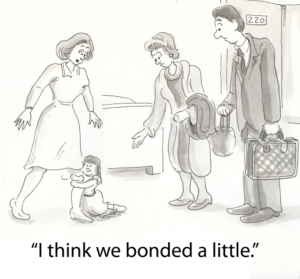Physical Address
304 North Cardinal St.
Dorchester Center, MA 02124
Physical Address
304 North Cardinal St.
Dorchester Center, MA 02124

Attachment theory suggests that the quality of the early attachment relationship between a child and their primary caregiver plays a crucial role in shaping their future relationships. According to this theory, there are four attachment styles that humans develop as a result of their early attachment experiences: secure attachment, avoidant fearful attachment, preoccupied attachment, and dismissive attachment. In this article, we will break down each attachment style, discuss their respective attachment personas, and explore how they can influence relationships.
People with secure attachment style have had consistent and responsive caregivers in their early years, which has led to them feeling secure and safe in their relationships. As a result, they are comfortable with intimacy and feel confident in seeking out support from others when needed.
Secure Attachment Persona (e.g. Sarah):
Individuals with avoidant attachment have experienced inconsistent caregiving in their early years, resulting in them feeling uneasy and anxious in relationships. They may crave intimacy but fear getting hurt, leading to them often avoiding emotional closeness.
Avoidant Attachment Persona (e.g. Jessica):
Individuals with preoccupied attachment or also known as an insecure attachment style have had caregivers who were inconsistently available, leading to them developing a deep need for closeness and reassurance. They may become preoccupied with their relationships, fearing rejection or abandonment.
Attachment Persona (e.g. Steve):
Individuals with dismissive attachment have had caregivers who were emotionally unavailable, leading to them becoming self-sufficient and dismissing the importance of close relationships. They may avoid emotional intimacy altogether and view relationships as unnecessary.
Attachment Persona (e.g. John):
Our attachment styles are influenced by our early attachment experiences with our primary caregivers. For example, if a child experiences a stressful situation, such as hitting their head on a table, a secure parent would comfort the child briefly and then let them go on with their day. In contrast, a preoccupied parent may become overprotective and prevent the child from exploring further, while a dismissive parent may not show any concern at all.

Evolutionary psychology suggests that these attachment styles developed as a way to ensure the survival of our species. Babies who received consistent and responsive care were more likely to survive and thrive, leading to the development of secure attachment. However, inconsistent or neglectful care could signal danger, leading to the development of avoidant fearful or dismissive attachment, while inconsistent care could lead to preoccupied attachment as a way to ensure attention and protection.
Attachment styles can play a significant role in the success or failure of romantic relationships. People with secure attachment tend to have healthier relationships and may be more resilient in the face of conflict. However, people with avoidant fearful or dismissive attachment may struggle with emotional intimacy and may have difficulty forming close intimate relationships. Preoccupied attachment can lead to constant fear of rejection or abandonment, which can create tension and conflict in relationships. Those with preoccupied attachment styles may constantly seek words of affirmation, such as “I love you,” and may struggle if their partner doesn’t express their affection consistently. As a result, someone with this attachment style may be viewed as “needy,” potentially creating tension and conflict in the relationship.
Additionally, conflict can arise when people with different attachment styles come together. For example, a person with avoidant fearful attachment may become distant when their partner seeks emotional closeness, leading to feelings of rejection for the other person.
The good news is that adult attachment styles are not set in stone, and with effort, it is possible to change them. One of the first steps is becoming aware of your attachment style and how it may be impacting your relationships. Journaling can be a helpful tool for this, as it can help you identify patterns and triggers that may be related to your attachment style.
Additionally, practicing self-awareness and self-compassion can help you develop more secure attachment behaviors. This may involve learning to express your emotions and needs more openly, setting boundaries in relationships, and seeking support from others when needed.
Therapy can also be a helpful tool for changing different type of attachment styles. A trained therapist can help you identify underlying issues and develop strategies for creating healthier relationships. They may also use techniques such as attachment-based therapy to help you develop more secure style of attachment behaviors.
In conclusion, understanding your attachment type and its impact on your adult relationships can be a valuable tool for personal growth and relationship success. By becoming aware of your attachment style and working to develop more secure attachment behaviors, you can create healthier and more fulfilling relationships in your life. Remember, change is possible, and with effort and self-reflection, you can develop healthier attachment patterns and strengthen your relationships.